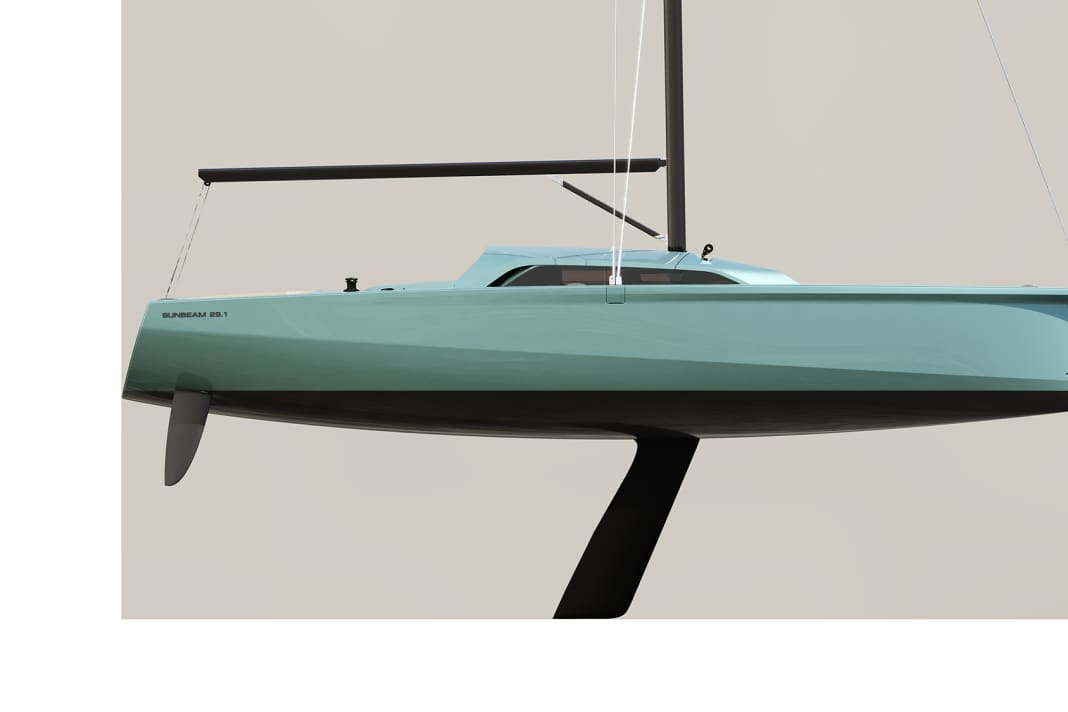





Waves ran high when the shipyard from Mattsee near Salzburg presented a new product with a generational change in the shipyard's management, thereby moving away from the traditional, conservative corner it had previously successfully occupied. The Sunbeam 32.1 (click here for photos) was downright provocative with a negative bow, the so-called flight deck protruding far above the hull, a diagonal stern and a cover over the superstructure. The calculation worked out, the radical design language, to which Industrial designer Gerald Kiska The launch of the new shipyard manager Andreas Schöchl caused a stir and a certain change in image. And indeed for a well-filled order book: the shipyard has already sold 30 units.
The blatant big sister at YACHT tv
Daysailer with swivelling keel for shallow waters
Now the second product from the fruitful Schöchl/Kiska collaboration is on its way. The technical design is again the work of Jakopin & Jakopin. The Sunbeam 29.1 adopts stylistic elements from the 32.1, but these have been toned down somewhat. And so the new daysailer comes across as a modern, visually equally independent yacht. The electrically extendable cockpit extension has been removed, but the huge cockpit and the twin rudder system, which is controlled by a tiller on the 29.1, have remained. New under water: the swing keel enables draughts of 1.85 to 0.85 centimetres. The shipyard wants to respond to the occasionally lower water levels on the lakes and offer owners more flexibility in their choice of sailing areas. The keel is raised hydraulically, which can optionally be done by an electric motor.
The backstayless rig is equipped with a square top mainsail and a self-tacking jib. The sail area can be configured up to 47 square metres. On rough courses, a code zero or a gennaker can be attached to the fixed bowsprit. A carbon mast is optionally available. There are two winches on the coaming, which the crew uses to operate all the sheets and the halyards and spreaders led aft on deck. The winches can be operated electrically on request.
Interior with modules
The interior is open-plan, there is no main bulkhead to separate it. The galley and wet room are optional. Both modules can also be retrofitted, allowing the shipyard to respond to changing customer requirements. For example, it is conceivable to have the boat fitted with a galley or wet room after a resale.
The daysailer is equipped with an electric motor as standard. Tropical wood is not used. As an alternative to the teak deck, the shipyard has been using Resysta. The natural product consists of rice husks and mineral salts and is made from unused materials from the food industry. A defined area for a large solar panel is provided in the deck superstructure.
The starting price is 148,631 euros including electric motor, lithium batteries, sails and Resysta in the cockpit. The daysailer will celebrate its world premiere at boot Düsseldorf in January 2024.
Technical data Sunbeam 29.1
- Hull length 8.99 m
- Width 2.49 m
- Draught 0.85-1.85 m
- Mainsail 30.0 m²
- Genoa 17.0 m²
- Gennaker 60.0 m²
- Weight 2.0 tonnes
- Electric motor 4 kW; diesel optional
